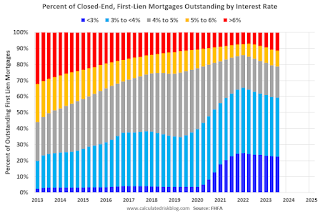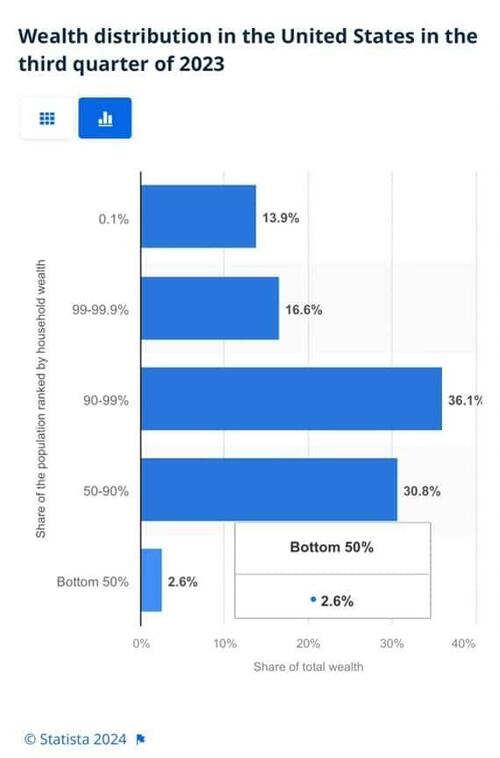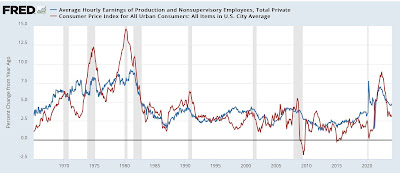Uncategorized
Best Penny Stocks Today? 3 To Watch Under $3 Now
Best Penny Stocks To Buy? 3 To Watch In The Stock Market Today
The post Best Penny Stocks Today? 3 To Watch Under $3 Now appeared first on Penny Stocks…

Whether you’re looking for your next big investment or want to find a quick hit of volatility, penny stocks are back in focus. Thanks to the stock market sell-off over the last few months, countless companies have come under pressure. As they say, pressure makes diamonds, and that has translated in the stock market in 2023.
Are Penny Stocks Worth It?
Take a look at companies like Carvana (NYSE: CVNA). It sold off until reaching sub-$4 levels. From the ashes rose the phoenix, with CVNA stock ripping to highs of over $50. You can also see this in other companies like popular meme stock GameStop (NYSE: GME). While it’s a far cry from its prices of over $400, it’s still trading significantly higher than where it was prior to the pandemic.
We actually discussed the company when it raised attention from Michael Burry at the time. In the article Penny Stocks To Buy Or Sell In September: GameStop (GME) we discussed the unusual action from The Big Short investor. Shares traded below $4 at the time, and unwitting investors would ultimately see it surge to record levels later on. GME stock presently sits around $13.
Penny Stocks To Buy Now
What are better known as “Household stocks,” are referred to as such because they’ve got well-known names and brands. While it isn’t always the trend that you find household names trading at penny stock levels, the goal is always the same: buy low, sell high, profit, repeat. In many cases, the names don’t matter as much as the stock market action or momentum.
However, if you’re someone looking to invest in penny stocks, then things like household stocks my bring more psychological confidence than anything else. Obviously, that doesn’t mean the beaten-down stocks won’t go lower. But if it’s a matter of putting a well-known company on your list of penny stocks versus a company that is a start-up, some will choose the name.
Needless to say, in this article, we’re looking at some of the most active penny stocks today, regardless of having a household name or not. We look at recent catalysts, news, and sentiment to help give insight into what’s happening in the stock market today for these companies. Once you see the info, you can decide if they’re worth adding to your penny stocks to watch list before next week.
- Intrusion, Inc. (NASDAQ: INTZ)
- Bakkt Holdings, Inc (NYSE: BKKT)
- Talkspace, Inc. (NASDAQ: TALK)
Intrusion, Inc. (INTZ)
Intrusion, Inc. is a cybersecurity company from Plano, Texas. They specialize in preventing cyberattacks through a proprietary threat intelligence database. Their product, Intrusion Shield, is a Zero Trust, reputation-based security solution. It boasts a significant threat intelligence database, driving Intrusion Shield. It integrates with existing infrastructure to block malicious traffic and enhance overall cybersecurity posture.
This database includes data on over 8.5 billion IP addresses, with historical data, known associations, and behavioral patterns. The product, which was first launched commercially in 2021, is designed to prevent zero-day and ransomware attacks by observing traffic and instantly blocking suspicious connections. The company also plans to announce its financial results for the third quarter of 2023 on November 14, 2023, after the market closes. So if it’s on your list, keep that in mind later this month.
– Penny Stocks: Strategies for Weathering Economic Recessions
Investors will likely be scrutinizing the performance of Intrusion Shield to gauge its market acceptance and contribution to revenue. The effectiveness of the company’s solutions against the backdrop of a rapidly evolving cyber threat landscape could significantly influence investor sentiment as well.
Another positive that investors are hanging onto is the above-the-market offering the company announced this week. Heavy insider participation has also brought optimism to INTZ stock. “We are excited to announce that we have entered into an above-market price Securities Purchase Agreement through a Private Offering,” said Tony Scott, CEO of Intrusion. “The Offering also marks an important step for Intrusion as we continue to focus on ensuring we have the funds we need to propel our growth and focus on satisfying our customers’ needs with cost-effective cybersecurity solutions for their enterprise.”
Bakkt Holdings, Inc (BKKT)
Bakkt Holdings, Inc. is a company specializing in cryptocurrency services. They are expanding their global footprint and recently announced several international market entries. It is partnering with existing and new clients, focusing on Latin America, Europe, and Asia. In Latin America, Bakkt is collaborating with Hapi to enhance crypto trading in Mexico, Argentina, and soon Brazil. In Europe, Bakkt plans to launch in Spain and offer services in the UK and EU with 3.0verse.
For the Asia market, Bakkt’s partnership with 3.0verse will extend to Hong Kong and Singapore. The CEO, Gavin Michael, emphasized Bakkt’s regulatory compliance as a strength in their global expansion. Domestically, Bakkt is also expanding its institutional client base, joining EDX Markets’ clearing house and custodial network. Michael highlighted Bakkt’s focus on stable, long-term revenue through subscription-based services, despite recent share price volatility.
This expansion could positively influence sentiment around Bakkt. By entering new markets and diversifying its client base, Bakkt could see an increase in business activity. However, global expansion also brings challenges like regulatory compliance and market adaptation. These factors, along with the recent volatility in the BKKT stock price, could bring some pause to an overly bullish stance on its prospects.
Talkspace, Inc. (TALK)
Talkspace, Inc. is a virtual behavioral healthcare company. They specialize in accessible mental healthcare services.

In their Q3 2023 report, Talkspace revealed significant financial improvements. B2B payor revenue grew 132% year-over-year. Total revenue reached $38.6 million, a 32% increase from the previous year. This growth was driven primarily by a 79% increase in B2B revenue, despite a decline in consumer revenue. Gross profit rose to $18.8 million, a 29% increase.
However, gross margin slightly declined due to a shift towards payor revenue. Operating expenses decreased by 30%, contributing to a reduced net loss of $4.4 million. Adjusted EBITDA loss improved significantly by 82%, showing a promising trend toward financial stability.
– Penny Stocks To Buy Now? 7 Under $1 To Watch Today
For FY 2023, Talkspace forecasts revenue around $146 million, higher than previous estimates. The company aims to reach break-even Adjusted EBITDA by Q1 2024, with a projected cash balance of approximately $120 million. CEO Dr. Jon Cohen highlighted the momentum in their payor business, driven by demand for quality in-network benefits. CFO Jennifer Fulk emphasized progress towards break-even and improving clinical operations.
The post Best Penny Stocks Today? 3 To Watch Under $3 Now appeared first on Penny Stocks to Buy, Picks, News and Information | PennyStocks.com.
nasdaq stocks pandemic cryptocurrency crypto penny stocks cryptoUncategorized
Q4 Update: Delinquencies, Foreclosures and REO
Today, in the Calculated Risk Real Estate Newsletter: Q4 Update: Delinquencies, Foreclosures and REO
A brief excerpt: I’ve argued repeatedly that we would NOT see a surge in foreclosures that would significantly impact house prices (as happened followi…

A brief excerpt:
I’ve argued repeatedly that we would NOT see a surge in foreclosures that would significantly impact house prices (as happened following the housing bubble). The two key reasons are mortgage lending has been solid, and most homeowners have substantial equity in their homes..There is much more in the article. You can subscribe at https://calculatedrisk.substack.com/ mortgage rates real estate mortgages pandemic interest rates
...
And on mortgage rates, here is some data from the FHFA’s National Mortgage Database showing the distribution of interest rates on closed-end, fixed-rate 1-4 family mortgages outstanding at the end of each quarter since Q1 2013 through Q3 2023 (Q4 2023 data will be released in a two weeks).
This shows the surge in the percent of loans under 3%, and also under 4%, starting in early 2020 as mortgage rates declined sharply during the pandemic. Currently 22.6% of loans are under 3%, 59.4% are under 4%, and 78.7% are under 5%.
With substantial equity, and low mortgage rates (mostly at a fixed rates), few homeowners will have financial difficulties.
Uncategorized
‘Bougie Broke’ – The Financial Reality Behind The Facade
‘Bougie Broke’ – The Financial Reality Behind The Facade
Authored by Michael Lebowitz via RealInvestmentAdvice.com,
Social media users claiming…

Authored by Michael Lebowitz via RealInvestmentAdvice.com,
Social media users claiming to be Bougie Broke share pictures of their fancy cars, high-fashion clothing, and selfies in exotic locations and expensive restaurants. Yet they complain about living paycheck to paycheck and lacking the means to support their lifestyle.
Bougie broke is like “keeping up with the Joneses,” spending beyond one’s means to impress others.
Bougie Broke gives us a glimpse into the financial condition of a growing number of consumers. Since personal consumption represents about two-thirds of economic activity, it’s worth diving into the Bougie Broke fad to appreciate if a large subset of the population can continue to consume at current rates.
The Wealth Divide Disclaimer
Forecasting personal consumption is always tricky, but it has become even more challenging in the post-pandemic era. To appreciate why we share a joke told by Mike Green.
Bill Gates and I walk into the bar…
Bartender: “Wow… a couple of billionaires on average!”
Bill Gates, Jeff Bezos, Elon Musk, Mark Zuckerberg, and other billionaires make us all much richer, on average. Unfortunately, we can’t use the average to pay our bills.
According to Wikipedia, Bill Gates is one of 756 billionaires living in the United States. Many of these billionaires became much wealthier due to the pandemic as their investment fortunes proliferated.
To appreciate the wealth divide, consider the graph below courtesy of Statista. 1% of the U.S. population holds 30% of the wealth. The wealthiest 10% of households have two-thirds of the wealth. The bottom half of the population accounts for less than 3% of the wealth.
The uber-wealthy grossly distorts consumption and savings data. And, with the sharp increase in their wealth over the past few years, the consumption and savings data are more distorted.
Furthermore, and critical to appreciate, the spending by the wealthy doesn’t fluctuate with the economy. Therefore, the spending of the lower wealth classes drives marginal changes in consumption. As such, the condition of the not-so-wealthy is most important for forecasting changes in consumption.
Revenge Spending
Deciphering personal data has also become more difficult because our spending habits have changed due to the pandemic.
A great example is revenge spending. Per the New York Times:
Ola Majekodunmi, the founder of All Things Money, a finance site for young adults, explained revenge spending as expenditures meant to make up for “lost time” after an event like the pandemic.
So, between the growing wealth divide and irregular spending habits, let’s quantify personal savings, debt usage, and real wages to appreciate better if Bougie Broke is a mass movement or a silly meme.
The Means To Consume
Savings, debt, and wages are the three primary sources that give consumers the ability to consume.
Savings
The graph below shows the rollercoaster on which personal savings have been since the pandemic. The savings rate is hovering at the lowest rate since those seen before the 2008 recession. The total amount of personal savings is back to 2017 levels. But, on an inflation-adjusted basis, it’s at 10-year lows. On average, most consumers are drawing down their savings or less. Given that wages are increasing and unemployment is historically low, they must be consuming more.
Now, strip out the savings of the uber-wealthy, and it’s probable that the amount of personal savings for much of the population is negligible. A survey by Payroll.org estimates that 78% of Americans live paycheck to paycheck.
More on Insufficient Savings
The Fed’s latest, albeit old, Report on the Economic Well-Being of U.S. Households from June 2023 claims that over a third of households do not have enough savings to cover an unexpected $400 expense. We venture to guess that number has grown since then. To wit, the number of households with essentially no savings rose 5% from their prior report a year earlier.
Relatively small, unexpected expenses, such as a car repair or a modest medical bill, can be a hardship for many families. When faced with a hypothetical expense of $400, 63 percent of all adults in 2022 said they would have covered it exclusively using cash, savings, or a credit card paid off at the next statement (referred to, altogether, as “cash or its equivalent”). The remainder said they would have paid by borrowing or selling something or said they would not have been able to cover the expense.
Debt
After periods where consumers drained their existing savings and/or devoted less of their paychecks to savings, they either slowed their consumption patterns or borrowed to keep them up. Currently, it seems like many are choosing the latter option. Consumer borrowing is accelerating at a quicker pace than it was before the pandemic.
The first graph below shows outstanding credit card debt fell during the pandemic as the economy cratered. However, after multiple stimulus checks and broad-based economic recovery, consumer confidence rose, and with it, credit card balances surged.
The current trend is steeper than the pre-pandemic trend. Some may be a catch-up, but the current rate is unsustainable. Consequently, borrowing will likely slow down to its pre-pandemic trend or even below it as consumers deal with higher credit card balances and 20+% interest rates on the debt.
The second graph shows that since 2022, credit card balances have grown faster than our incomes. Like the first graph, the credit usage versus income trend is unsustainable, especially with current interest rates.
With many consumers maxing out their credit cards, is it any wonder buy-now-pay-later loans (BNPL) are increasing rapidly?
Insider Intelligence believes that 79 million Americans, or a quarter of those over 18 years old, use BNPL. Lending Tree claims that “nearly 1 in 3 consumers (31%) say they’re at least considering using a buy now, pay later (BNPL) loan this month.”More telling, according to their survey, only 52% of those asked are confident they can pay off their BNPL loan without missing a payment!
Wage Growth
Wages have been growing above trend since the pandemic. Since 2022, the average annual growth in compensation has been 6.28%. Higher incomes support more consumption, but higher prices reduce the amount of goods or services one can buy. Over the same period, real compensation has grown by less than half a percent annually. The average real compensation growth was 2.30% during the three years before the pandemic.
In other words, compensation is just keeping up with inflation instead of outpacing it and providing consumers with the ability to consume, save, or pay down debt.
It’s All About Employment
The unemployment rate is 3.9%, up slightly from recent lows but still among the lowest rates in the last seventy-five years.
The uptick in credit card usage, decline in savings, and the savings rate argue that consumers are slowly running out of room to keep consuming at their current pace.
However, the most significant means by which we consume is income. If the unemployment rate stays low, consumption may moderate. But, if the recent uptick in unemployment continues, a recession is extremely likely, as we have seen every time it turned higher.
It’s not just those losing jobs that consume less. Of greater impact is a loss of confidence by those employed when they see friends or neighbors being laid off.
Accordingly, the labor market is probably the most important leading indicator of consumption and of the ability of the Bougie Broke to continue to be Bougie instead of flat-out broke!
Summary
There are always consumers living above their means. This is often harmless until their means decline or disappear. The Bougie Broke meme and the ability social media gives consumers to flaunt their “wealth” is a new medium for an age-old message.
Diving into the data, it argues that consumption will likely slow in the coming months. Such would allow some consumers to save and whittle down their debt. That situation would be healthy and unlikely to cause a recession.
The potential for the unemployment rate to continue higher is of much greater concern. The combination of a higher unemployment rate and strapped consumers could accentuate a recession.
Uncategorized
The most potent labor market indicator of all is still strongly positive
– by New Deal democratOn Monday I examined some series from last Friday’s Household survey in the jobs report, highlighting that they more frequently…

- by New Deal democrat
On Monday I examined some series from last Friday’s Household survey in the jobs report, highlighting that they more frequently than not indicated a recession was near or underway. But I concluded by noting that this survey has historically been noisy, and I thought it would be resolved away this time. Specifically, there was strong contrary data from the Establishment survey, backed up by yesterday’s inflation report, to the contrary. Today I’ll examine that, looking at two other series.
-

 Uncategorized3 weeks ago
Uncategorized3 weeks agoAll Of The Elements Are In Place For An Economic Crisis Of Staggering Proportions
-

 International5 days ago
International5 days agoEyePoint poaches medical chief from Apellis; Sandoz CFO, longtime BioNTech exec to retire
-

 Uncategorized4 weeks ago
Uncategorized4 weeks agoCalifornia Counties Could Be Forced To Pay $300 Million To Cover COVID-Era Program
-

 Uncategorized3 weeks ago
Uncategorized3 weeks agoApparel Retailer Express Moving Toward Bankruptcy
-

 Uncategorized4 weeks ago
Uncategorized4 weeks agoIndustrial Production Decreased 0.1% in January
-

 International5 days ago
International5 days agoWalmart launches clever answer to Target’s new membership program
-

 Uncategorized4 weeks ago
Uncategorized4 weeks agoRFK Jr: The Wuhan Cover-Up & The Rise Of The Biowarfare-Industrial Complex
-

 Uncategorized3 weeks ago
Uncategorized3 weeks agoGOP Efforts To Shore Up Election Security In Swing States Face Challenges



























